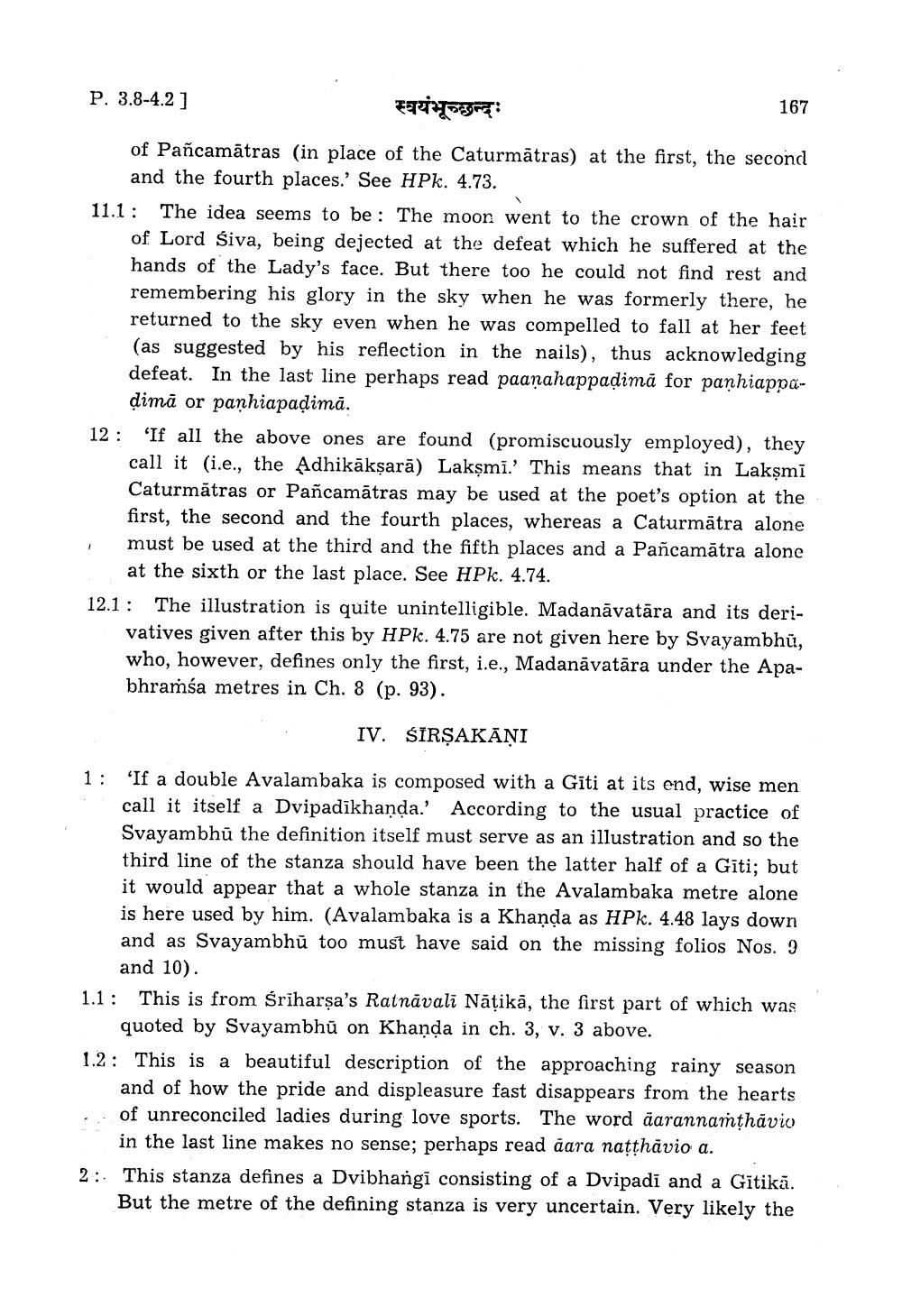________________
P. 3.8-4.21
स्वयंभूच्छन्दः
167
of Pañcamātras (in place of the Caturmātras) at the first, the second
and the fourth places.' See HPk. 4.73. 11.1: The idea seems to be : The moon went to the crown of the hair
of Lord śiva, being dejected at the defeat which he suffered at the hands of the Lady's face. But there too he could not find rest and remembering his glory in the sky when he was formerly there, he returned to the sky even when he was compelled to fall at her feet (as suggested by his reflection in the nails), thus acknowledging defeat. In the last line perhaps read paanahappadimă for panhiappa
dimā or panhiapadimă. 12: 'If all the above ones are found (promiscuously employed), they
call it (i.e., the Adhikākṣarā) Lakşmi.' This means that in Lakşmi Caturmătras or Pañcamātras may be used at the poet's option at the first, the second and the fourth places, whereas a Caturmātra alone must be used at the third and the fifth places and a Pañcamātra alone
at the sixth or the last place. See HPk. 4.74. 12.1: The illustration is quite unintelligible. Madanávatāra and its deri
vatives given after this by HPk. 4.75 are not given here by Svayambhu, who, however, defines only the first, i.e., Madanāvatāra under the Apabhramśa metres in Ch. 8 (p. 93).
IV. SIRSAKĀŅI
1: 'If a double Avalambaka is composed with a Giti at its end, wise men
call it itself a Dvipadīkhanda.' According to the usual practice of Svayambhū the definition itself must serve as an illustration and so the third line of the stanza should have been the latter half of a Gīti; but it would appear that a whole stanza in the Avalambaka metre alone is here used by him. (Avalambaka is a Khanda as HPk. 4.48 lays down and as Svayambhū too must have said on the missing folios Nos. 9
and 10). 1.1: This is from Śriharşa's Ratnāvali Năţikā, the first part of which was
quoted by Svayambhū on Khanda in ch. 3, v. 3 above. 1.2: This is a beautiful description of the approaching rainy season
and of how the pride and displeasure fast disappears from the hearts of unreconciled ladies during love sports. The word aarannamthāvio
in the last line makes no sense; perhaps read aara natthāvio a. 2: This stanza defines a Dvibhangi consisting of a Dvipadi and a Gītikā.
But the metre of the defining stanza is very uncertain. Very likely the




